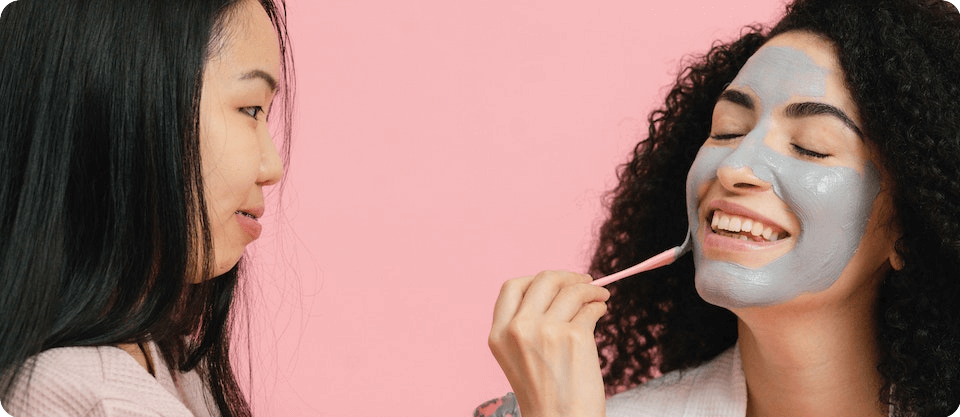
The complete guide on different types of hair removal techniques
At some time in our lives, we have all gotten frustrated with the amount of hair we find on our bodies – why do we as humans need body hair?
Should we remove all our body hair or are there certain areas on the body that we should avoid hair removal? Do you know the options when it comes to hair removal, and the results of whichever option you choose?
Different methods of hair removal
There are a variety of options when it comes to removing body hair, some resulting in permanent hair removal, some options resulting in semi-permanent hair removal, and the rest in temporary hair removal.
Permanent hair removal
Electrolysis
Electrolysis is the only option when it comes to permanent hair removal. This is a process of removing hair with the use of electricity. A small needle is inserted into the hair follicle and will either chemically destroy the follicle by decomposing the blood supply to the follicle, with the use of galvanic current, or it would use high-frequency current, which makes use of heat to destroy the follicle. The best method of electrolysis is a combination of both. Because electrolysis destroys the hair follicle, it will never grow another hair, and that is why it is the only permanent method of hair removal.
Semi-permanent hair removal
Laser and IPL (Intense Pulse Light)
For anyone that has had laser hair removal done, you will realise why it is called semi-permanent hair reduction, and not permanent hair removal. When laser treatment is performed, it uses light to destroy the growth cells in the hair. When these treatments are done in the anagen phase of hair growth, they are most effective.
Unfortunately, there is no way of telling which stage the hair growth cycle is in, and that is why laser is done as a series of treatments. The laser will reduce the amount of body hair, and the hairs that do grow will be a lot softer, lighter, and slower to grow. In very rare cases, hair growth will stop completely. Normally laser will be done in a series of treatments, and once the results are achieved, a person would go onto a maintenance plan, meaning that approximately every year, they would need to return for a few treatments to keep up the results.
The downside to laser is that it is most effective on darker hair colours, as the laser light is attracted to pigment (melanin) in the hairs, of which lighter hair colours do not have much.
Laser should also be applied with caution to darker skin types, as it is attracted to pigments, and it could result in skin damage and scarring.
Temporary hair removal
Threading
Threading makes use of a cotton thread which is twisted and rolled along the surface of the skin, where it picks up the hair and lifts it out of the follicle. This is a very fast method of hair removal, and is normally relatively inexpensive, as it requires minimal products or supplies. Threading is normally done on the eyebrows, however, it can also be done on the arms and legs, although this process will take a lot longer. Results will last approximately four to six weeks, the same timing as wax, as the hairs are removed from the follicle.
Tweezing
Commonly used after a waxing or threading treatment to remove any stray hairs. Tweezing makes use of tweezers to remove the hair from the root of the follicle one by one. There are different types of tweezers that you can get, pointed tweezers, which are good for removing ingrown hairs, or blunt tweezers which work well to remove hairs left behind after waxing. Tweezing can also be used to shape and remove eyebrow hairs.
Sugaring
Sugaring is another ancient method of hair removal that has recently become popular again. This is relatively inexpensive, and natural, as it makes use of ingredients that most of us find in our kitchen cupboards like sugar, lemon juice and water. Many people that perform sugaring treatments make their own paste. It is also great for sensitive skin, as it contains very few ingredients, and they are very low on the skin irritant level. Unlike wax, sugaring paste is water soluble meaning that it is easily removed with water. The ingredients are boiled together, formed into a syrup, and then cooled and pressed onto the skin and quickly removed, pulling any hairs along with it. The application and removal of sugaring products are very similar to wax, and the timing of the hairs to grow back is also expected to be about four to six weeks.
Waxing
Waxing is the most common hair removal method. There are 2 different types of wax – hard wax and soft wax. The main ingredient found in both is beeswax and resins. When waxing is performed, the hair takes longer to grow back, normally four to six weeks and the skin is smoother without the blunt stubble that can be experienced with shaving. The results of waxing can vary, sometimes the hair may return a lot quicker than when having another treatment done. This is because of the hair growth stages, and like laser, waxing is the most effective when the hairs are in the anagen stage of hair growth- meaning they are actively growing.
Shaving
Probably one of the most common methods of hair removal, and one that most of you perform regularly is shaving. Did you know, on average, men spend 5 months of their entire lives shaving? This is a stark contrast to women who spend about 2 months of their lives shaving. When shaving the hair is removed at skin level, which means it would take approximately 24 – 48 hours for any regrowth to be felt. Shaving can also irritate the skin, so if you are sensitive, it is advised that you seek alternate methods of hair removal. Most believe that shaving will cause thicker hairs and that the hair growth will be a lot stronger, but this is not true, it is simply because the ends of the hairs are not blunt when regrowing.
Depilatory (hair-removal) cream
A depilatory cream is a hair removal cream that is applied to the surface of the skin. They work to dissolve the hair at skin level; therefore, regrowth will be experienced within 24 – 48 hours. Depilatory creams are formulated as an alkaline solution, which will cause the hair to expand, and breaks down the protein bonds that make up the hair. Depilatory creams make use of the chemical sodium hydroxide and potassium hydroxide to do this. Because these formulations are alkaline, and the skin is acidic, there is an increased chance of a reaction, and due to the negative effect they have on the skin, as well as the odour that is associated with them – they are no longer a very popular choice when it comes to hair removal options. It is always important to do a patch test when it comes to using this type of product and avoid it on any sensitive skins, or the face as it is an alkaline product.
Hair removal tips
- Exfoliate the area before the treatment (whichever hair removal method you are choosing) as this will help to remove dead skin cells and will have a better effect on your results.
- Make sure to exfoliate the area at least once a week after a waxing treatment to avoid ingrown hairs.
- Shave in the same direction as the hair growth. Shaving in the opposite direction will cause irritation, redness, and razor bumps.
- Apply wax in the same direction as hair growth but remove wax in the opposite direction of hair growth to effectively remove all hairs.
- Keep hairs between 2.5 and 5 mm for waxing to be effective. If the hairs are not long enough, they will not effectively be removed.
- Make sure the skin is moisturised and soothing ingredients like aloe vera are applied after waxing and shaving treatments.
- After waxing or laser, for 24 hours, avoid sun exposure, exercising or excessive sweating. This can irritate the follicle.
- Wet the hair and skin before shaving with warm water. This will open the follicle and soften the hair. Dry shaving increases the risk of irritation.
- Shave with a shaving balm or lotion rather than soap. Due to the pH of soap, it draws oils from the skin and can have a tightening effect, which can cause dryness and irritation after shaving.
Which hair removal method is best?
Unfortunately, there is no best method of hair removal. It depends on you, the person, your skin and how it may react, and the results that you are wanting to achieve. If you are wanting permanent hair removal, Electrolysis is best. If you are wanting to permanently reduce your hair growth, laser would be the option for you. If you are ok with receiving treatments every few weeks, threading, sugaring, or waxing are your options, and if hair is not a great concern for you, then shaving regularly is the way to go!



